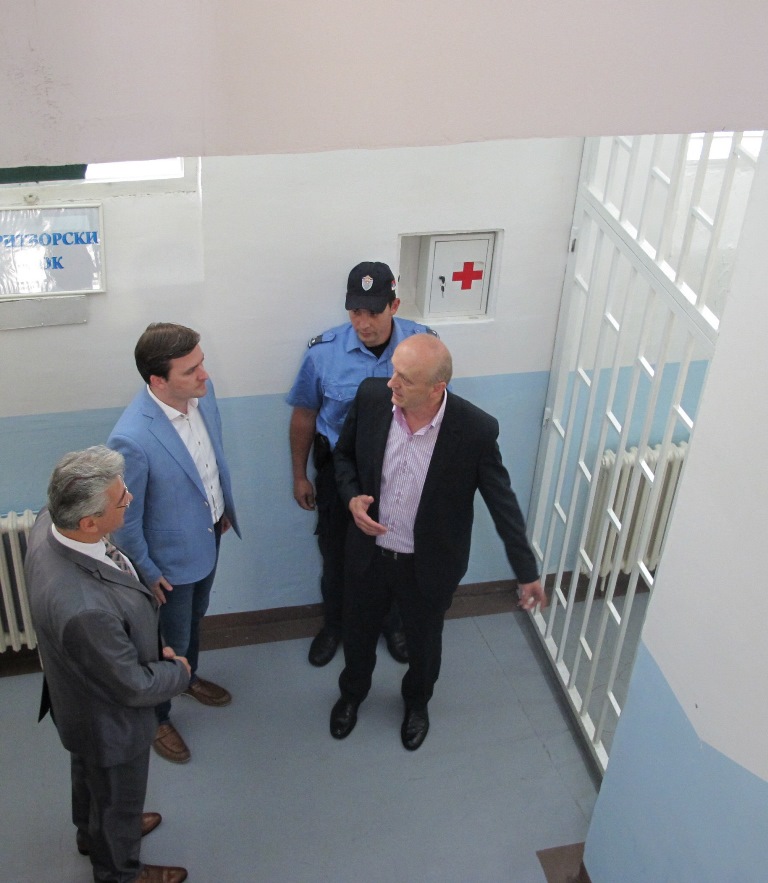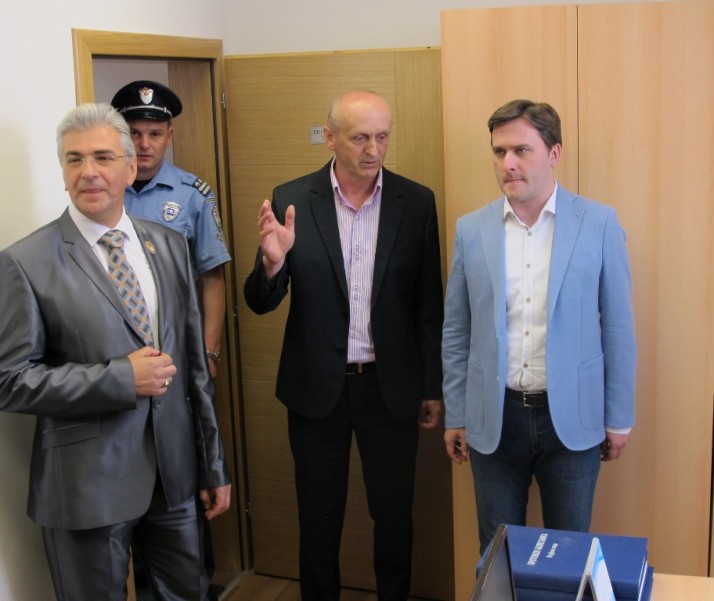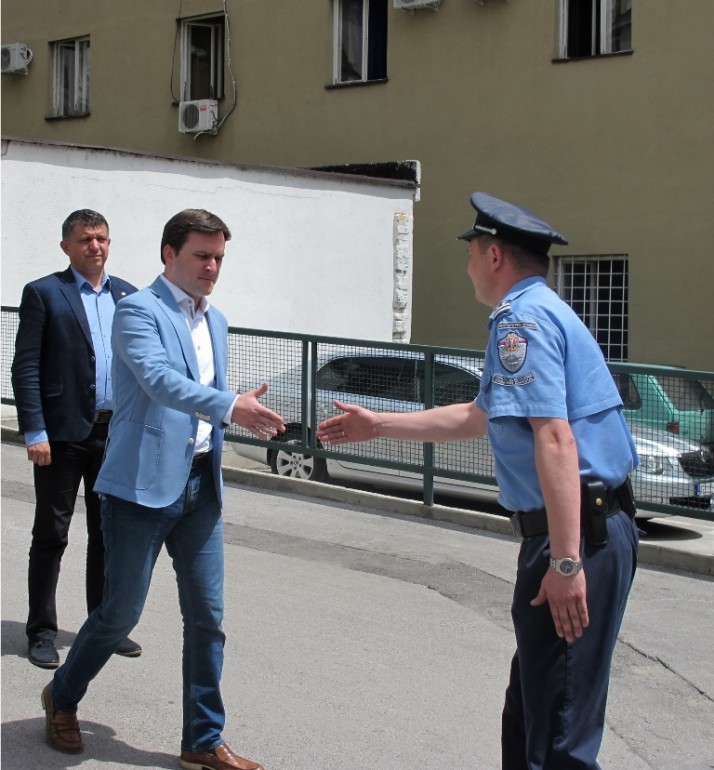“The current capacities of prisons have been improved compared to the previous 4-year period. With the construction of two new prisons[, one in] Pancevo and [one in] Kragujevac, Serbia will achieve stability and that prisons have their capacities proportionately filled, leaving no overcrowded prisons”, Nikola Selakovic – Justice Minister said today.
“In 2012, the capacity of our prison institutes was around 7,200 places, while there were over 11,000 persons apprehended”, Selakovic told the reporters after he visited the renovated part of the District Prison in Uzice. According to him, the present capacities of prisons are slightly above 9,500 persons and the number of persons serving or starting to serve their sentences is constantly changing. Emphasising that this number was always more than 10,000 persons, Selakovic stated that, in any event, the present-day capacities were significantly better than before.
Reminding everyone that two days before, works on the construction of a new Correctional Institute in Pancevo had begun, Selakovic repeated that works on the construction of a new facility of the Correctional Institute in Kragujevac would start by the end of the running year.
“In these two facilities alone, we will gain 900 new places. With such capacity, on the one hand, and the alternative sanctions capacity building, on the other hand, our system is achieving for the first time a type of [prison] stability and that prisons are being proportionately filled, leaving no overcrowded prisons in Serbia”, the Justice Minister emphasised.
When asked about the wait for referrals to serving sentences, Selakovic explained that that was, first and foremost, a question for the courts as they referred convicted persons to sentence serving. “To my knowledge, we currently do not have a problem of [persons] waiting to be referred to serving [their] sentences”, Selakovic stated pointing out to the area in which there was a type of minor delay: alternative sanctions with electronic surveillance.
“This, however, was directly related to additional funding and costs, since it concerns an extremely expensive and sophisticated equipment“, the Minister explained. He further stressed that each year, the Budget submissions included an estimated increase in the number of control units.
“That was the reason there was a longer wait on the serving of alternative sanctions with electronic surveillance. The number of days one would have to wait depended on each individual court”, Selakovic noted.
He added that during the month of April, new systems were being promoted which were planned to be used, in particular, in cases of domestic violence-related crimes which implied a security measure of prohibition of access to specific premises or persons.
“Additionally, I am certain that even with the capacity expansion, we will do everything that is up to us to ensure there is no waiting and that justice is not delayed”, the Justice Minister emphasised.
On another note, the prison in Uzice is one of 17 district prisons in the Republic of Serbia and it is half-open. Founded at the end of the First World War, it is located in the city centre, in a complex also accommodating the Ministry of Interior and the Court in Uzice. The present optimal capacity is 78 persons, but there are 62 persons presently deprived of their freedom.
According to the Ministry of Justice records, approximately 15 million dinars from the state Budget was invested in the reconstruction of and additions to the roof covering.
The six-month works resulted in additional 200 m2 of usable surface and a complete remodelling of the facade.






